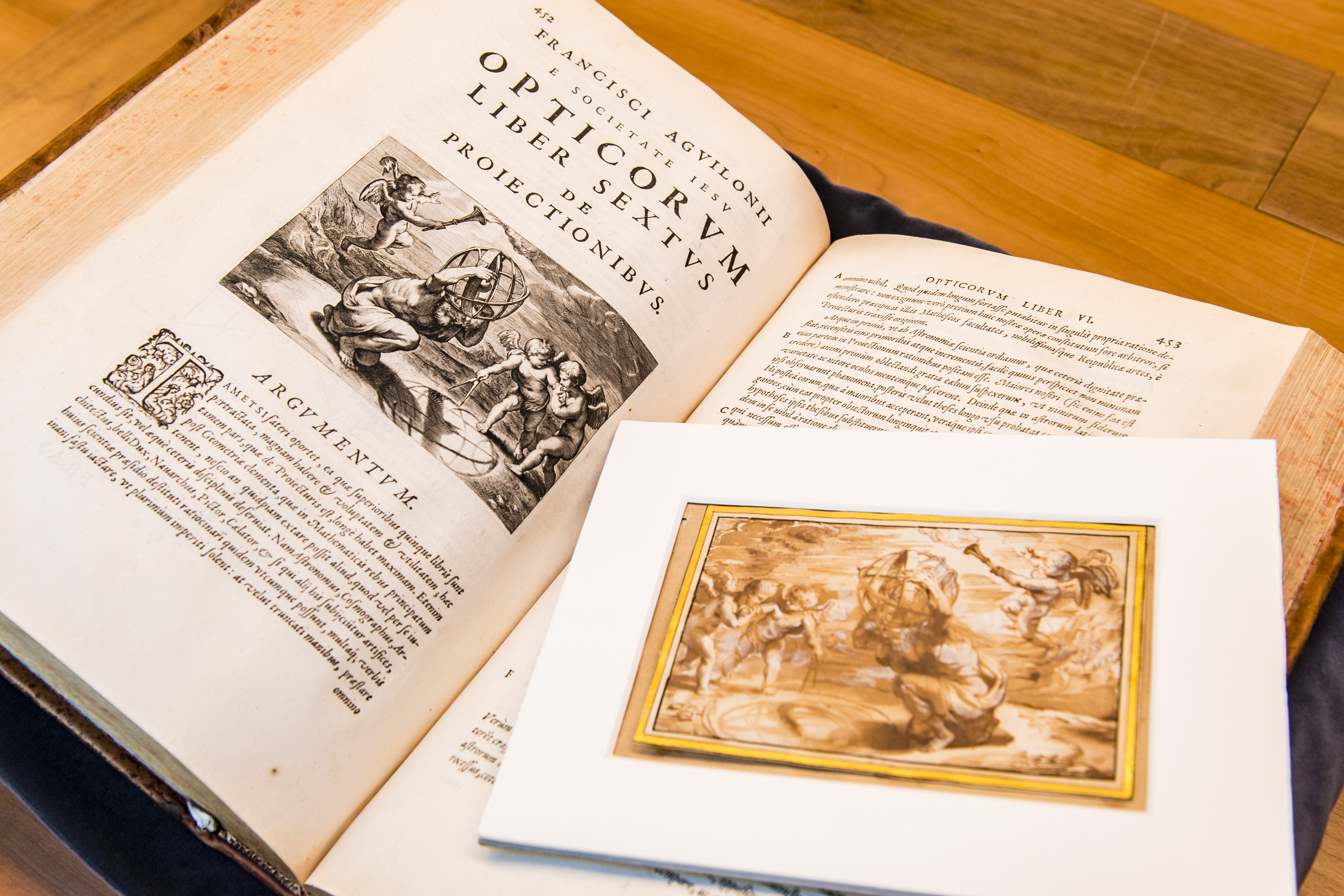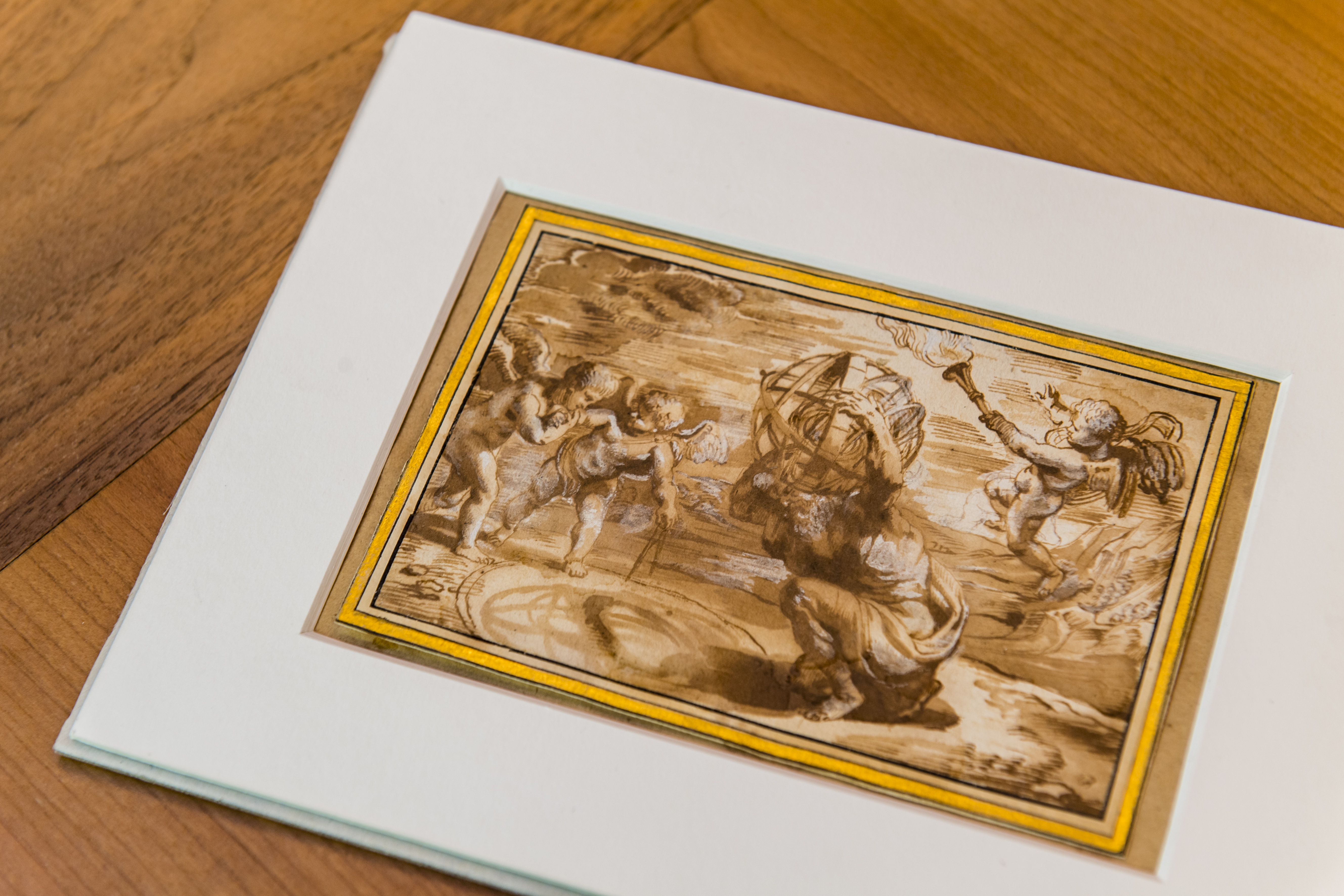
The Flemish Community has acquired a drawing by Peter Paul Rubens that was believed to be lost. The work is included in the Flemish List of Masterpieces and the Museum Plantin-Moretus has it on long-term loan.
It is a design that Rubens was commissioned to produce by the Moretus family for an illustration in the book Opticorum libri sex by the mathematician and physicist Franciscus Aguilonius. This scientific work on optics was published in 1613 by the Plantin Press.

The Opticorum libri sex - or Six books about optics - by the Jesuit Franciscus Aguilonius (1567-1617) was one of the very first publications from the Plantin Press on which Rubens collaborated. The book provides an extensive survey of the contemporary knowledge of optics. In addition to the title page, Rubens also designed the title vignettes for the six volumes of the book.
The recently discovered drawing, a design for the final volume about projections, shows a kneeling scholar with an armillarium, or globe of the heavens fitted with metal rings that represent the most important celestial orbits. A putto is illuminating the globe with a burning torch. The shadow of the rings on the ground is being studied by two other putti. In his book, Aguilonius describes the many applications for projections in science and art.
The drawing belonged to the 18th century private collection of the Marquess of Lagoy, Jean-Baptiste-Florentin-Gabriel de Meryan (1764-1829). It subsequently remained in the hands of the family which is why it was completely unknown until recently. Academics assumed that it had been lost.
(source: Museum Plantin-Moretus)
